| Columns Retired Columns & Blogs |
One of the best ever and much needed direction during the pandemic.

The Moody Blues: In Search of the Lost Chord
Deram/London Records DES 18017 (LP). 1968. Tony Clarke, prod.; Derek Varnals, Adrian Martins, engs.
Never a big Moody Blues fan, on a whim I picked up a cheaply priced used copy of In Search of the Lost Chord. I liked it a lot more than I expected to. It's a late '60s concept album, a concept I dig when done right. It's electric-guitar-driven, but it includes 33 different instruments; it sounds ambitiously Beatles-esque in some places, brimming with youthful energy and ideas of a band on the cusp of greatness. The music offers lush, eardrum-caressing vocals and brilliantly inventive moments—darned if the intensifying, 45-second album opener, "Departure," a poem written and recited by band drummer Graeme Edge, wasn't the perfect prelude to the classic "Ride My See-Saw." The LP's sound is rich and warm. The cover, by artist Phil Travers, is a striking meditation on the concept of, well, meditation.
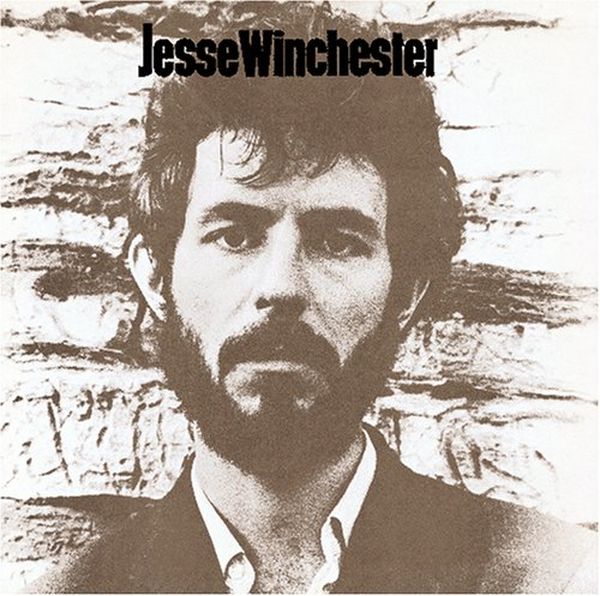
Jesse Winchester: Jesse Winchester
Ampex Records A-10104 (LP). 1970. Robbie Robertson, prod.; Todd Rundgren, eng.; Bob Ludwig, mastering eng.
Fun story: In 1967, conscientious Vietnam War objector Jesse Winchester fled the US to settle in Montreal, Canada. There, he recorded this, his first album, with The Band co-founder and Montreal resident Robbie Robertson.
Robbie loved Jesse's music. He was also intrigued by the idea of an American southerner crossing the border up north, just as he was about to head in the opposite direction. Of the 10 albums Jesse recorded over 30 years in Montreal, this is his most gem-filled.
Engineered and mixed by Todd Rundgren and mastered by Bob Ludwig, the music is reminiscent of The Band's, which is hardly surprising considering that Robbie produced and played guitar on it. The album contains beautiful odes to a homeland Jesse would return to in 2002 as well as a fun lament about snow that even the winter-hardiest Canuck would understand.
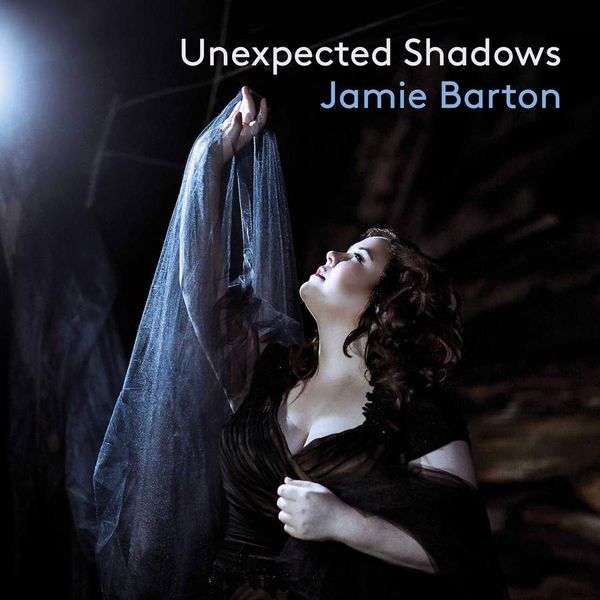
Jamie Barton: Unexpected Shadows
Songs and arias by Jake Heggie. Jamie Barton, mezzo-soprano; Jake Heggie, piano; Matt Haimovitz, cello
Pentatone PTC5186836. 2020. Steve Barnett, prod. Preston Smith, eng.
Even before his opera Dead Man Walking (2000), composer Jake Heggie was blessed to work with some of the finest artists of our time, such as Susan Graham, Jennifer Larmore, and Frederica von Stade. But no one—including character mezzo Joyce Castle, for whom he and his frequent librettist Gene Scheer created the song cycle "Statuesque"—has possessed the outsized personality, total embrace of life, and vocal heft of the remarkable Jamie Barton. There's "Statuesque," in which great statues share their inner thoughts; "Iconic Legacies: First Ladies at the Smithsonian," in which Heggie and Scheer address the emotions evoked by clothes and objects associated with Marian Anderson, Mary Todd Lincoln, Jacqueline Kennedy, and Barbara Bush; "Of Gods and Cats," in which a droll Gavin Geoffrey Dillard parodies religious allegories; "The Work at Hand," which sets Laura Morefield's deeply moving poetry about acceptance and death; and excerpts from "The Breaking Waves" to texts by Sister Helen Prejean and the opera "If I Were You." Barton and Heggie (with support from Matt Haimovitz) transport you to a land of contemplation, tears, and side-splitting hilarity. This recital is a knockout.
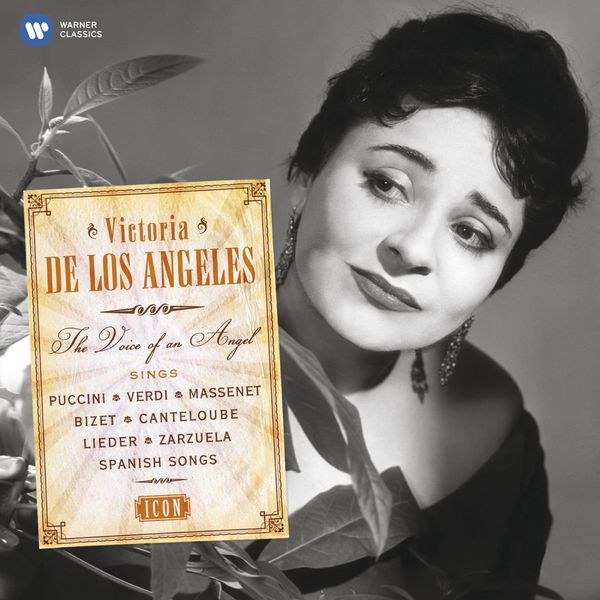
Victoria de los Angeles: The Voice of an Angel Sings
Arias by Puccini, Verdi, Massenet, and Bizet, along with songs and zarzuela by Canteloube, Falla, Fauré, Berlioz, Schubert, and many more.
Warner Classics 217308 (7 CDs). 2008. Tony Locantro, compilation prod.; various original prods. and engs.
Not since the heyday of Elisabeth Schumann has a soprano possessed the charm, sincerity, versatility, and intelligence of Victoria de los Angeles. From her professional debut in 1945 to her final recitals, one of which I attended in 1996, her mastery of myriad vocal forms was incomparable. Who else could woo as Manon, seduce as Carmen, and break the heart as Mimì (in La Bohème)? She created the ideal perfumed persona for Fauré's song "Les roses d'Ispahan" (The Roses of Ispahan) and moved beyond words in the failed seduction of "L'indifférent," the final song in Ravel's exotic cycle Shéhérazade. Through her extraordinary voice, de los Angeles channeled a kaleidoscope of colors and emotions and illuminated life's mysteries like a brilliant spiritual guide.
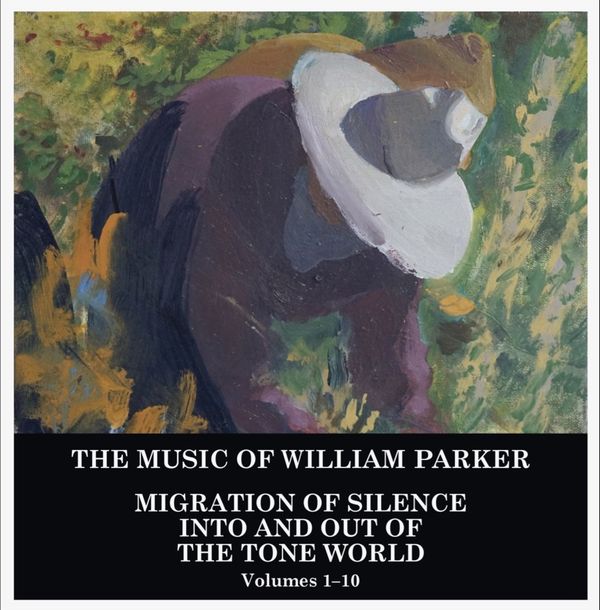
The Music Of William Parker: Migration Of Silence Into And Out Of The Tone World Vols. 1–10
Centering Records 1020-1029 (10 CDs). 2020. William Parker, prod.; Jim Clouse, eng.
As cofounder of the annual Vision Festival, bassist/composer/ poet William Parker is the world's foremost curator of spiritually inspired music. The focus on this sprawling opus is Parker's compositions: Child of Sound is Eri Yamamoto playing solo piano interpretations of 14 Parker compositions; Afternoon Poem is Lisa Sokolov's spoken-word versions of Parker's poetry. Parker's latest visions (from 2018–2020) place him in a panoptical range of colors and settings, mostly playing bass (among other instruments). My favorite disc is Harlem Speaks, with drummer Hamid Drake and vocalist Fay Victor. The music is by turns a balm for hard times and an inspiration to survive.
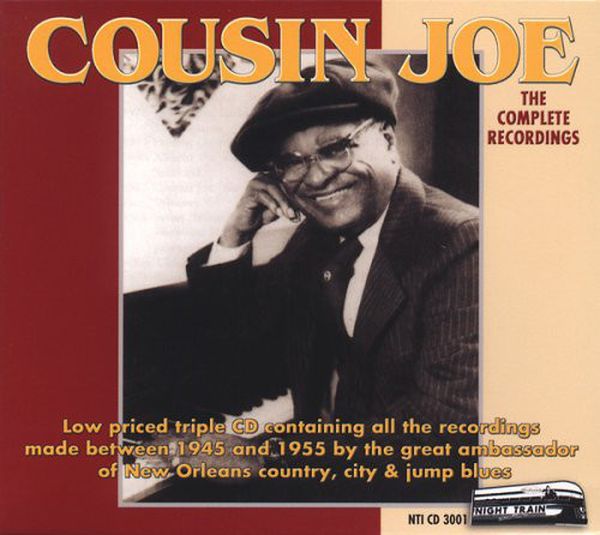
Cousin Joe: The Complete Recordings 1945–1955
Night Train International NTI CD3001 (3 CDs). 2001. Aaron Fuchs, reissue prod.; various engs.
Cousin Joe was a beloved New Orleans piano "professor" who worked for many years at French Quarter clubs and bistros like The Famous Door, the Court of Two Sisters, and the Absinthe Bar. He was a prolific composer and raconteur whose tales of life in New Orleans and development of characters like Boxcar Shorty made him popular and led to regional hits. This meticulously gathered and annotated collection covers his work for numerous labels in the company of Crescent City giants Danny Barker, Dave Bartholomew, Herb Hardesty, and Sam Price. His signature tune, the hilarious "Chicken à la Blues," is included.
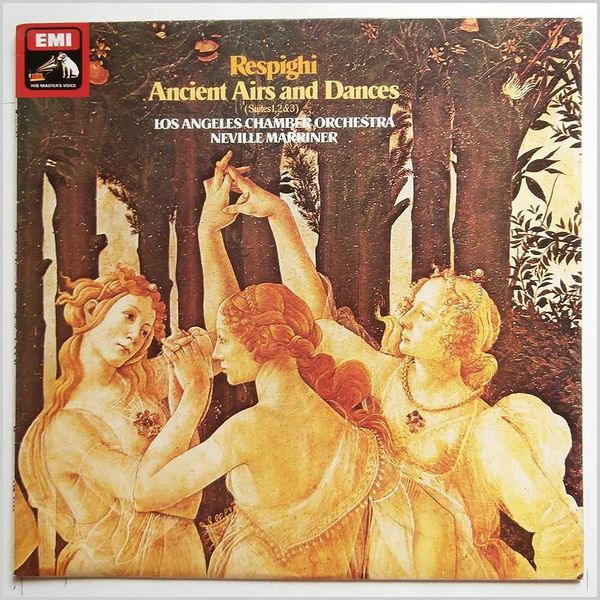
Respighi: Ancient Airs and Dances (Suites 1–3)
Los Angeles Chamber Orchestra/Marriner.
Angel S-37301 (LP). 1976. Christopher Bishop, prod.; Carson C. Taylor, eng.
Many people reflexively associate Respighi with his splashy, colorful "Roman trilogy" of tone poems, but he liked to tinker with Baroque music as well, as in these three suites based on old lute pieces. Not yet Sir at the time of the recording sessions, Neville Marriner fashions vibrant, neatly manicured string playing. Captivating woodwind soli are sensitive and eloquent. Best of all, the reproduction is first-class—Quadrophonic here—with pinpoint imaging of those glorious woodwinds within a warm, natural sonic frame.
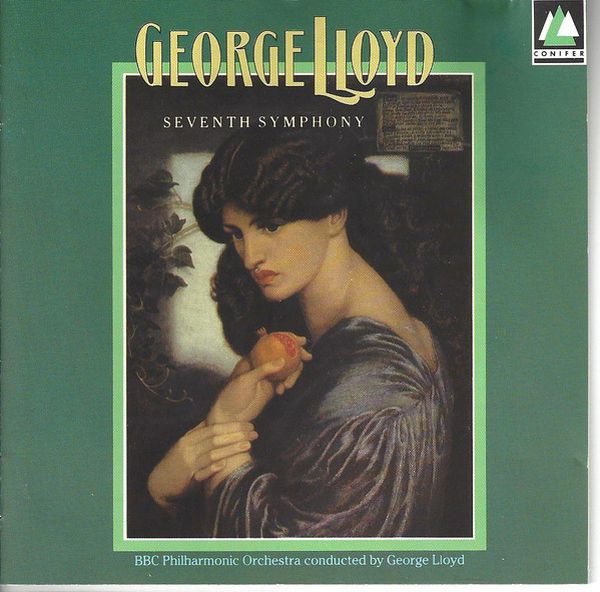
George Lloyd: Seventh Symphony
BBC Philharmonic Orchestra/Lloyd.
Conifer CFC-143 (LP). 1986. Howard Devon, prod.; Tony Faulkner, eng.
George Lloyd was the rare 20th century composer who consistently wrote for large orchestra. His work has been dismissed as "movie music." Those people must see some very strange films. In this three-movement symphony, based on the myth of Proserpina, the broad, melodic themes avoid the cinema's easy tugs at the heart. Other turbulent passages explore more advanced harmonies without simply piling on the dissonances. The whole has an inexorable logic. The orchestra responds to the composer with understanding, and the sound is vivid and colorful.

One of the best ever and much needed direction during the pandemic.

...when I dropped by my local brick-and-mortar stereo shop not long ago and my wife expressed some "concern" at my music buying this past year!

Two things that have kept me going all these months:
The constant stream of vinyl mailers that bring new music to my door, and fantasies of the moment I'll walk into a club again and hear it played live.
Looking forward to perusing the list.

Records ARE to live for. Music is ALIVE. We think it, we breathe it, even taste it. Let's call it for what it is.

Verdi in one of his best Aida
Why not highlight that this record is analog and is available in an analog edition (uncompressed)

This isn't my choice (although I love the recording), and I don't pretend to speak for Tom. But as far as I can tell, the CD/Blu-ray package is readily available, as is a 24/96 download at HDTracks and other sites, while the vinyl seems only available used.
There's also a potential fallacy in your statement. Do you know for certain that no compression was used by the recording engineers? I don't know, but I do know that many analog recordings were subject to compression.

I agree, but with patience you can find a good copy near mint, and maybe with more luck NEW.
Analog is less compressed than digital. On vinyl this is the closest thing to the original master tape.
On my analog system that recording, Aida-Verdi-Solti-Price, sounds better.
Good hunting and happy listening. Thank you.

I know my hearing is going, but I bought a CD of an artist I love and have many recordings. I was having a hard time understanding all the lyrics that was being sung. I thought, am I losing it and my hearing getting worse?
I dragged a file into Sony Sound Forge 14 and there is was: compressed and then the flat top wave form .1db under 0...full scale. Well, that engineer didn't want any "Overs". lol
There were points in each song where the music was above the vocalist. I always viewed the vocalist as a boat on water; big dynamic range might look like giant ocean waves in my editor which is fine if they are below 0 db. If the music is more gentle like a ripple in a lake the vocalist could be in a row boat or a nice wood bodies inboard boat, but always above the waves.
This seemed to be followed more by vocalist and engineers in the 40's, 50"s, and 60's like Sinatra, Bennett, et.al; and now Krall, Buble' and many others. Sad, but true.
It seems that with all the options in DAWs these days that recordings can be made worse by doing more engineering. It needs to be dialed back.
JA1's recordings are always a benchmark for me. His choral work is the best as are recordings by Eric Whitacre. When you can understand what the entire choir is singing you know the engineering is top notch.

Great List- Guys!
good to see a few 2020 titles make the grade.

Seems like a comedic cliche,
Are we intending to make it into an Institution here ?
It's bad taste that isn't funny.
We should take a leadership stance and describe these Albums as Hall of Fame Albums with each getting its own individual Number and date of enshrinement. ( Of course, if these Albums are actually deserving , which I think they are )
Stereophile needs to hold the Higher Ground in matters like this.
Tony in Venice Florida

Dear Tony,
You frequently amaze me. Stereophile's Records-To-Die-For already is an institution; it has appeared every year for a very long time. Are you suggesting that Jim Austin consider renaming the feature "Records to Live For?"
As for needing to take a leadership stance, I think that this long-standing feature and the magazine as a whole already do. Do you disagree?
Your "shoulds" suggest that you're ready to apply as our new editor. An interesting prospect, to be sure. Perhaps first, since you live on the FL coast and the consequences of global warming are being felt everywhere, you might consider moving to Higher Ground.
Be well. Without your thoughts, the comments section would never be the same. I hope as many people look forward to my contributions as they look forward to yours.
jason

Tony's lost a step.
He forgot to whine about the word "records" while mewling about "to die for."
But, he skipped his usual retelling of how he owned a Hi Fi business, so that's a step forward.

I'd need a good original instrument recording before I'd expect that.
HIP is high fidelity.
With JSB's music for harpsichord on a Grand Piano you can't DO it, as you have to leave notes out.
:-)

"to die for" is a 20th Century expression, born from a Comedic Movie. It is a tired expression about selfish greed for a Prada Purse. It's Cultural to a life of privilege and a disrespectful reference to a shallow pursuit to competitive acquisitions. It's a Bubble-Gum expression.
Our best recordings and the talent creating them "should" find a place of Distinction, documented for all time with Stereophile and Staff being the Curators. ( who is better equipped ? )
Great and Outstanding Recordings are the Bedrock Foundation of our wonderful hobby/avocation. We have a duty to Honour them with something they earned and achieved : Placement in Stereophile Staff's Hall of Greatness !
Stereophile could & should/could become Stereophile News & Record Review.
Higher Ground : I live 16 feet above Sea Level, am fully insured for Water, Storm Surges, Hurricanes and high winds. My residence is built to withstand 132mph flying bits. It's a Tropical Paradise. I can no longer tolerate returning to the frozen North, for any reason including participating in another Progressive Political Movement. Temperatures can drop to 50F and increase to 90F, our Pool floats at 88F, swimming is a weightless nirvana.
Thank you for writing, corresponding with you has always been a rewarding experience.
Tony in Venice Florida

With all due respect to Mr. Austin, his "vindication" of U2 seems to be a bit perplexing, based on the claims he makes in his review of their album War. While U2 has indeed carried on as a functioning band for longer than the Beatles did, they have not lasted "much longer" nor have they "sold almost as many records." Based on the numbers I have seen the Beatles total claimed sales figures are listed as anywhere between 500 million to 1 Billion units sold, with "Certified" sales of 282.3 Million. U2 on the other hand has total claimed sales of 150 Million and "Certified" sales of 111 Million. Perhaps Mr. Austin's idea of "nearly" and mine are different, because, in my opinion those respective numbers for each artist aren't even remotely near each other. And I like U2. Nothing against them.

I have the MFSL cd, The Tubes, in my collection. It is very good and played often. Would like to have seen something from the Van Halen catalogue make the list. I was waiting for a flight home in McCarran when the news arrived that Eddie Van Halen died. Once home, I went on a binge of Van Halen records for the next several days.
As for live music, we spent the Christmas week at Lauderdale By The Sea and the restaurants and bars by the beach were busy and featured many local two and three piece musical acts playing a great selection of music. We enjoyed it immensely!

I'm happy to see Starker's Mercury recording of the Bach cello suites here. I haven't heard it on vinyl, but the 3-channel tracks on the SACD are incredibly lifelike.

It is nice to see Previn's Rachmaninoff Second Symphony on this list. I love the recording, and his previous recording with EMI was also outstanding. Previn remains an underappreciated conductor, in my opinion. He was an intelligent and insightful musician, especially in his EMI recordings from the 60s and 70s. His Midsummer Night's Dream recording with EMI is one of my desert island recordings, and I think one of the top classical recordings of all time.
A special shout out to Ken Micallef for the Sonny Rollins - Rollins in Holland introduction, I never knew it existed, done, ordered. Thanks, Ken.

It is nice to see Previn's Rachmaninoff Second Symphony on this list.
Yes and his recording of Rachmaninoff's First Symphony is, imho, even better although the 1st, itself, is not.

It is good, but not as memorable to me because the second is lyrically superior.
Forgot to mention the Aida/Solti recording as well. Anything with Price and Vickers is bound to be a winner. Meeting Vickers many years ago in Montreal and spending quite a bit of time with him chatting about his career and the conductors he worked with was unforgettable. He wanted to continue chatting but I had to call it a night - a decision I immediately regretted.

Well, I did admit that the 2nd is a superior work but, otoh, I am bored by it and I still can get a kick from the 1st. Another Previn winner is his Shostakovich 8 with the LSO.
As for that Aida, yes, too, although I am much more of a Vickers fan than a Price fan.

You mean his Deutsche Gramophone 8th? that he did a few years ago? I find his later Shostakovich sometimes doesn't have that frenetic pace or edginess that Shostakovich requires. His earlier Shostakovich recordings better exemplified that although will admit I don't think I have his 8th on EMI, will have to check.
I was actually listening to Karajan's recording of Shostakovich's 10th the other night, the one he did in the 60s, and find he nails it, gets the tension and pace just right. I also compared that recording to a live recording of him and his orchestra live in Moscow and it is virtually indistinguishable from the recording, amazing how well he had them playing. He actually did very well with the digital recording from the 80s, but the sound is quite flat. It's a pity he never recorded more of Shostakovich's works.
But I digress, will have to seek Previn's earlier EMI of the 8th on vinyl.

Julie Mullins that R2D4 is meant to bring to readers' attention long forgotten or overlooked gems. What is she going to bring to our attention next year, Holst's tP's or DSotM?

Most of this music is not relatable for me and being relatable is the exact point of music. I really liked the music suggestions on Inner Fidelity.